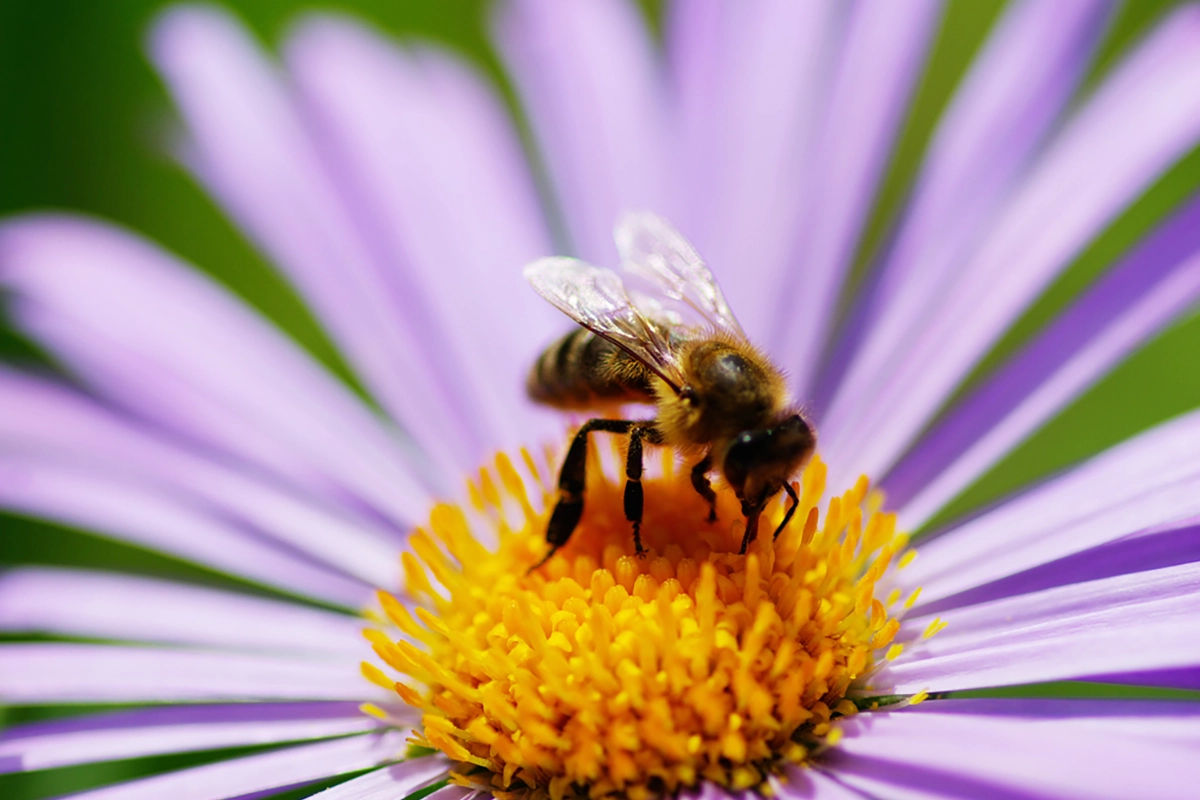While not all bees sting, most definitely do, and you should always be cautious when there are bees around. Most species won’t sting unless they are provoked or threatened, but
some bees (and most wasps) will seemingly sting for no reason. If you find
bees in your backyard, or around your home, you should always call a professional to
get rid of them for you. Never attempt to remove or relocate bees by yourself.
Why Do Bees Sting?
Bees release a pheromone when they are threatened which attracts other bees to defend their hive. They can be extremely dangerous in large numbers, especially to those with allergies. Bees will often only sting if are provoked or if they feel as
if their hive is threatened. Although you may find it obnoxious to find bees flying around you, or you may even be afraid of them, most of the time they are just attracted to your perfume, cologne, or the colors on your clothing. They are more than likely just checking to make sure you aren’t a flower, and they will leave you alone once they determine you aren’t. A bee’s stinger is attached to it’s stomach area, and when a bee stings, it becomes detached from their body. This causes the bee to die shortly after it’s stinger is inserted into comeone or something.
Which Bees Sting?
Although most bees sting, there are some stingless bees that don’t have a stinger. It’s important to know which bees sting and how to identify them to keep yourself, your children, and your pets safe. Always have bees
removed by a professional.
Female Bees
Female bees are the only ones with the ability to sting. Queen bees have a barbed stinger, and can sting multiple times if they need to. However, the queen bee doesn’t leave the hive under normal circumstances. Although male bees do not sting, they will perform defensive behaviors if the hive is under threat.
Bumble Bees
While bumble bees are extremely cute, the female bumble bees are able to sting. However, they are very unlikely to attack unless they are threatened or provoked. A bumble bee may also sting you if you accidentally step on it. Generally, though, bumble bees are very gentle and will leave you alone.
Honey Bees
Male bumble bees, called drones, are not able to sting. But, the females will sting when threatened. Even when honeybees are swarming, they are not likely to sting you. They are simply looking for a new place to call home. As long as you leave them alone, they should leave you alone too.


What Does a Bee Sting Look Like?
If you think you’ve been
stung by a bee, you should try to treat the sting as soon as possible. The sting will look like a red bump with a white dot in the middle of it. It may be tender or itchy for awhile afterward too, but you should keep your hands off of it.
How to Treat Bee Stings
To treat the sting follow these steps:
- Remove the stinger as quickly as you can with tweezers, or scrape it off with your fingernail. While you do this, try not to squeeze the area that was stung or the stinger. If you do, you may release more venom into your skin.
- Wash the area with soap and water so it doesn’t become infected.
- Apply ice to the area periodically so that you can reduce inflammation.
- Apply an antihistamine lotion, aloe vera, or hydrocortisone cream to prevent the area from itching and soothe your skin.
- You can also take Benadryl or a pain reliever to help with swelling and pain.
Need Help with Bees in Your Yard?
If you have bees around your home that you need help with, the professionals at
Classic Pest Control and Insulation can help you.
Contact us to get a free estimate! 